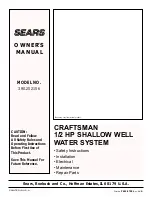
3
For the purpose of applying these definitions, awareness of the potential for RF
exposure in a workplace or similar environment can be provided through specific training
as part of an RF safety program. Warning signs and labels can also be used to establish
such awareness as long as they provide information, in a prominent manner, on the risk of
potential exposure and instructions on the methods of minimizing such a risk of exposure.”
The following conclusions can be drawn from these tables (Figure 2-1):
Power density between the feed flange and reflector is at a hazardous level and access
to this area must be prevented while the terminal is transmitting. Under no
circumstances should any part of a person’s body be placed in this region while the
terminal is transmitting.
Based on a controlled-area power density of 5 mW/cm
2
over any 6-minute period, in
some cases less than 14.6 seconds of exposure is allowable in this region. Note that, in
general, an operator would not be manually adjusting the feed during a high-rate, high-
power transmission. Also note that the power density decreases toward the reflector (as
the beam widens from the feed), so the maximum exposure time increases as the
distance from the feed increases.
Near-field levels of radiation are below the controlled-area requirement, but in some
cases are above the uncontrolled area requirement. Although the nature of
transmissions is such that radiated power levels should not reach full power at any time,
there is no absolute guarantee of reduced transmission levels; therefore, access to the
near field of the antenna must also be restricted. Since the near field is contained within
a cylinder pointed from the reflector toward the satellite, we can compute the horizontal
distance from the front of the reflector to which access must be restricted. Table 2-1
computes this distance. At distances in excess of the tabulated limits, access can be
unrestricted. Between the antenna and the tabulated limits, access should be limited to
less than 10 minutes in any 30-minute interval.
Far-field levels of radiation are below the uncontrolled-area requirement and are
therefore not a concern.
Содержание Ku-BAND RX
Страница 1: ...INSTALLATION AND OPERATION MANUAL FOR VSAT VS61 Ku BAND TX RX ANTENNAS...
Страница 15: ...7 Figure 3 1 Best Location Figure 3 2 Antenna Blockages...
Страница 46: ...38 Figure 4 1 Step 1 of Reference Searching Definition...
Страница 56: ...48 D i s h Figure 5 7 Determining the Heading Discrepancy Ship s BOW Figure 5 8 Direction of the Heading Offset...
Страница 65: ...57 Figure 6 3 Co pol Kits Optional...
Страница 76: ...68 when the key is pressed If you want to stop the skew pull out the key Figure 7 11 Skew in Jog Mode...
Страница 99: ...91 SEN VEL Angular Velocity of Elevation Cross Azimuth Axis Figure 7 37 Diagnostic for Sensor and Driver...
Страница 120: ...d Appendix C Layout of Radome and Antenna Mounting Holes Figure C 1 Plastic Radome...
Страница 121: ...e Figure C 2 FRP Radome Option...
Страница 122: ...f...
Страница 123: ...g Maritime Satellite Antenna...












































